![]() back to Stoke-on-Trent districts
back to Stoke-on-Trent districts
Districts
of the Stoke-on-Trent &
Newcastle-under-Lyme Conurbations
Abbey Hulton
![]()
![]()
![]()
next:
Milton
previous: Trent
Vale Stoke
Abbey Hulton
Staffordshire Past Track
|
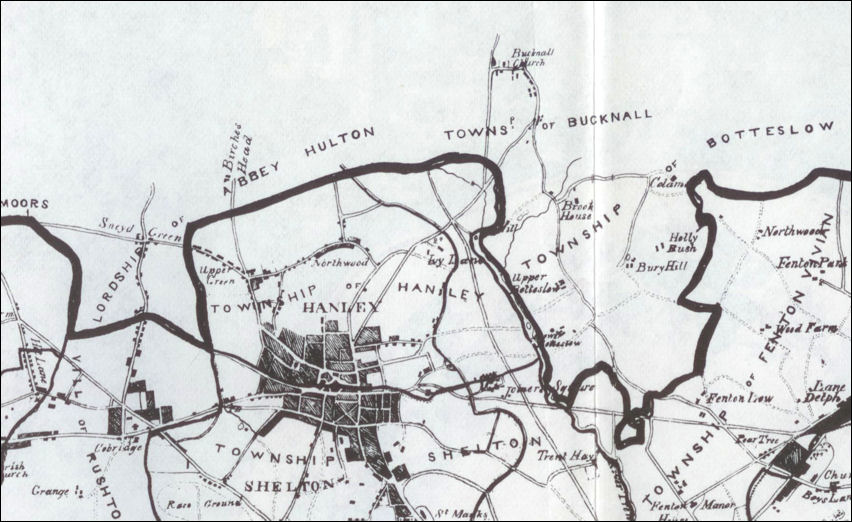
The Lordship of Abbey Hulton
situated to the north-west of the Borough of Stoke-upon-Trent - Ward's map of 1843
|
It was not until 1922 that Abbey Hulton became officially part of the County Borough of Stoke on Trent.
|
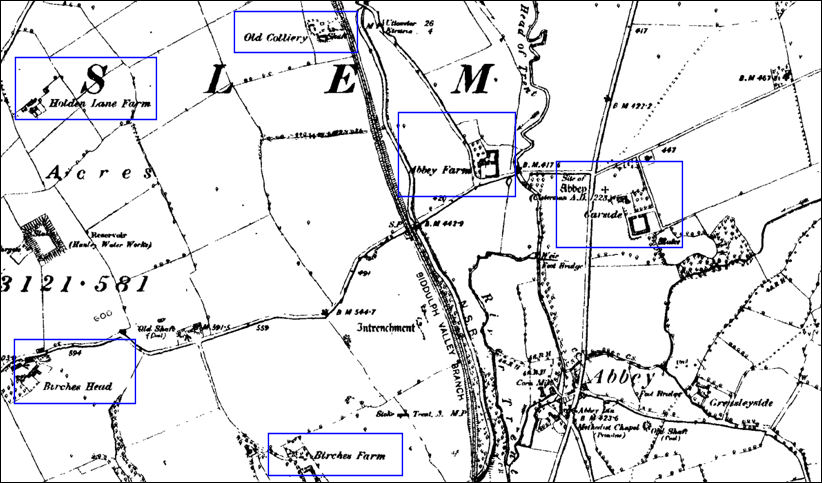
1890 map of Abbey Hulton - the
Abbey, various farms and features are highlighted
|
Although the lordship of Hulton was also called 'Abbey Hilton' by the late 16th century, the modern suburban district known as Abbey Hulton lies south of the former lordship boundary.
The Caldon Canal from Etruria to Froghall was opened in 1779 and runs through Abbey Hulton. Alongside the canal is the former Biddulph Valley railway line which was opened in 1864. |
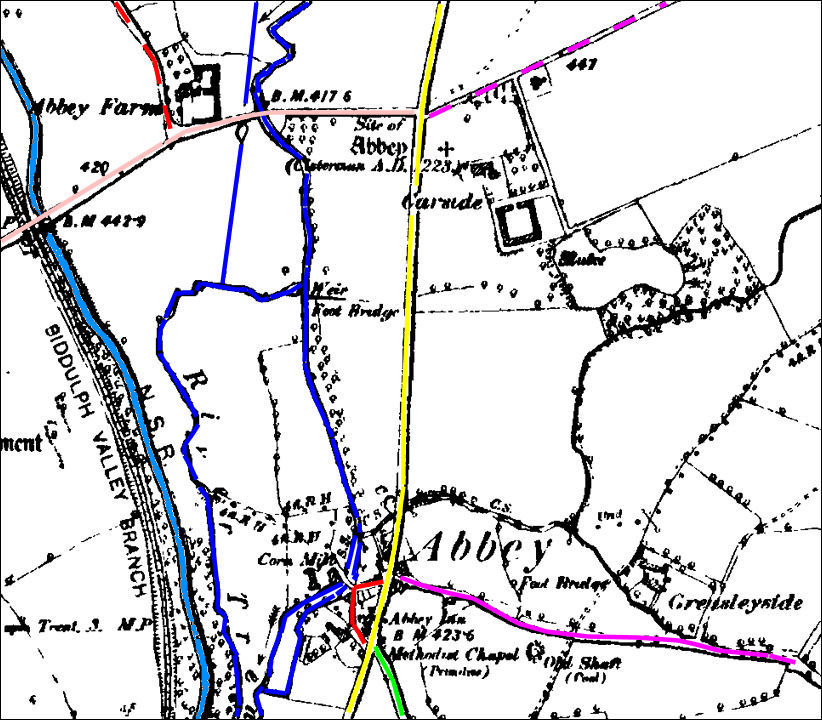
1890 map of Abbey Hulton
The
River Trent and Caldon Canal are highlighted in Blue
running alongside the canal is the Biddulph Valley Branch of the North
Staffordshire Railway
Yellow
= Leek Road
Purple = Greasley Road (note 'Greasleyside' to the right of the map)
Green = Abbey Road
Red = Abbey street
Salmon = Birches Head Road
Dashed Red = Redhills Road
Dashed Purple = Woodhead Road
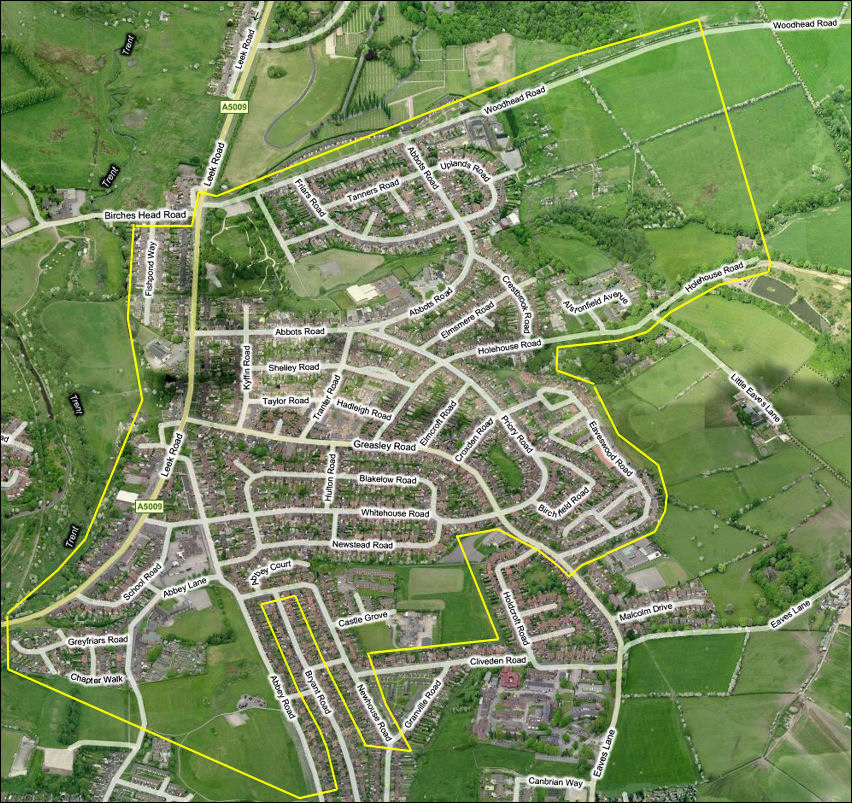
extent
of Abbey Hulton, Stoke-on-Trent - the River Trent on the left
the site of the Cistercian Abbey
is top left
Bing maps
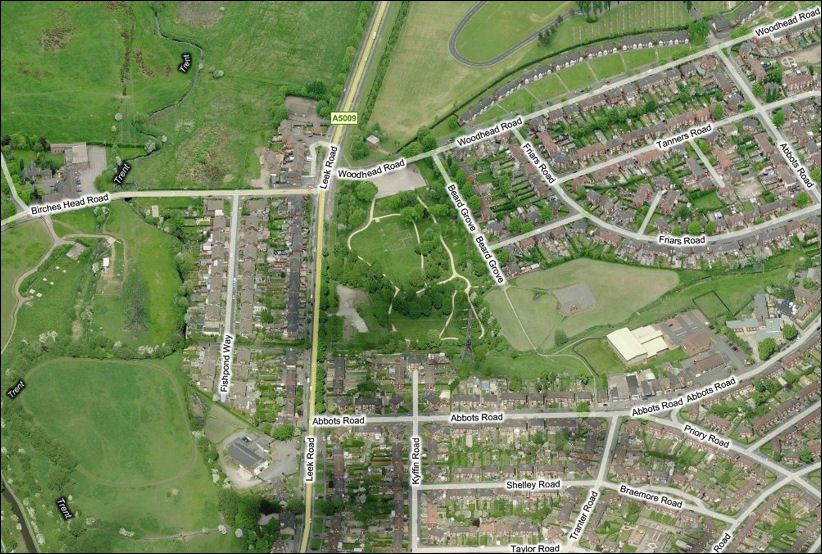
the site of the Cistercian
Abbey
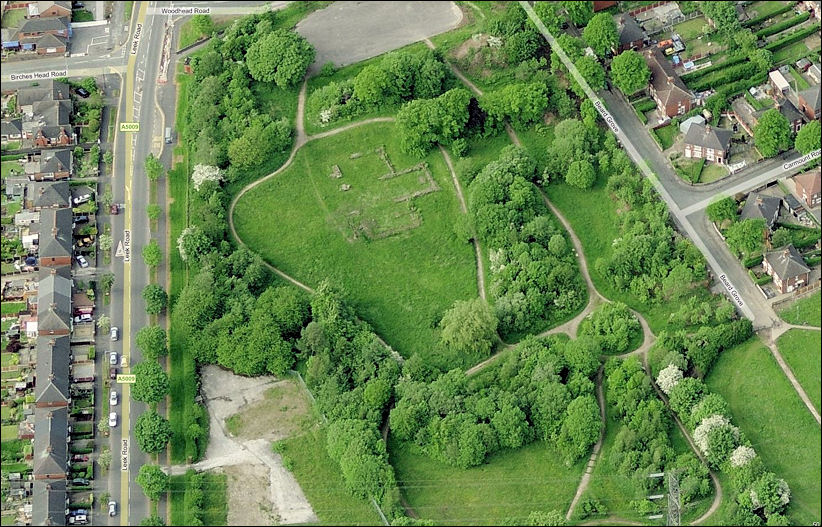
the extent of the
remains of the walls of the Abbey
buildings
Excavations of
the abbey site took place in 1884 and again in the early 1930s.
Stone
from the abbey complex was used in a number of buildings in the
vicinity, including Abbey Farm.
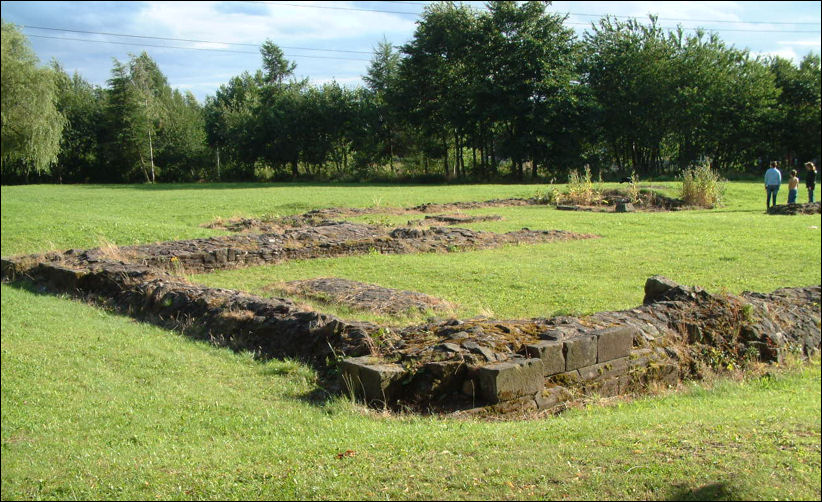
the remails of the walls
of the west end of the Abbey Church
| The abbey, dedicated to St Mary,
belonged to the Cistercian order, the White Monks.
It was founded in 1223 by Henry de Audley in what was then a remote part of the county, in keeping with the traditional kind of site which the Cistercians chose for their religious houses. The Audleys continued to be benefactors of the abbey during the Middle Ages, although it was always poor with only ever a small number of monks. |
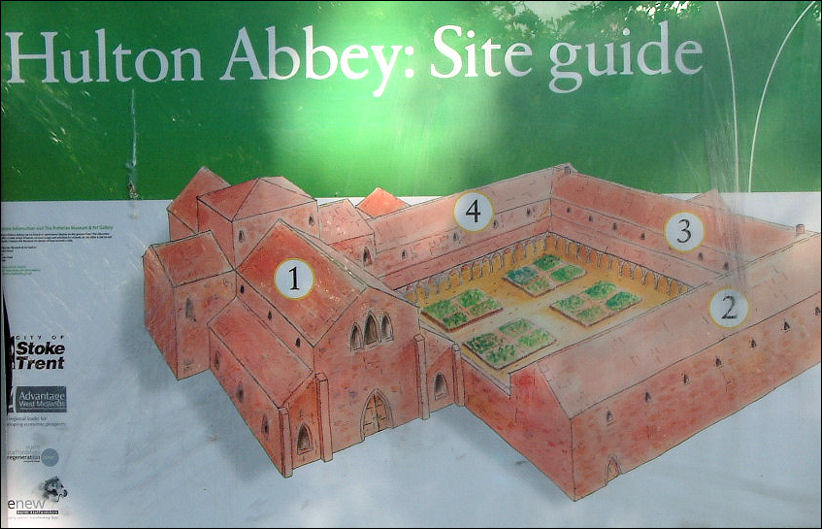
Hulton Abbey
: Site Guide
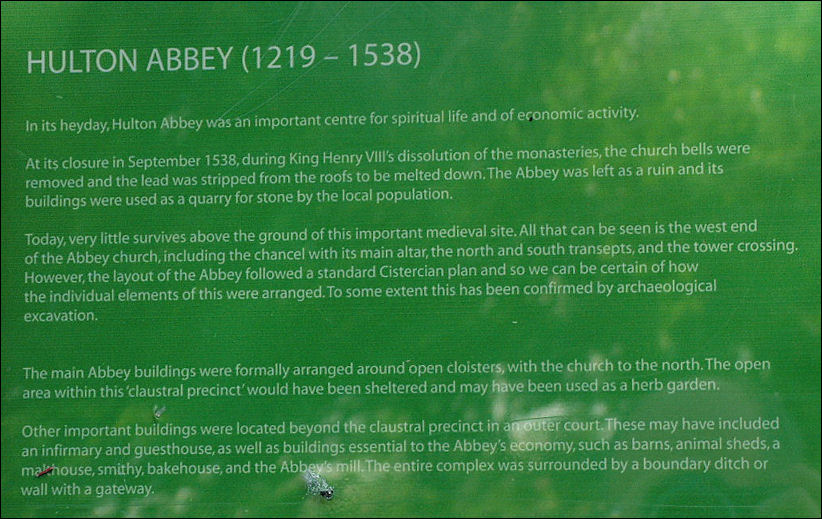
Hulton Abbey
1219 - 1538
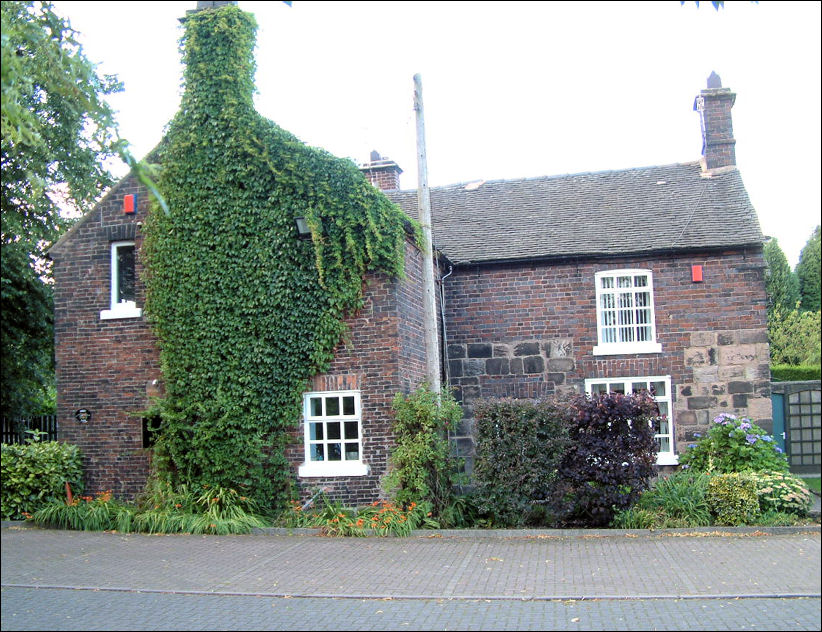
Abbey Farm on Birches Head
Road
|
A bridge known as Abbey Bridge existed by 1733 - this is thought to be the bridge which carries Birches Head Road over the River Trent by Abbey Farm. Abbey Farm to the west of the Abbey, beyond the Trent, was in existence by the early 18th century when it was the home of John Bourne, grandfather of the Primitive Methodist leader Hugh Bourne. It appears to have been rebuilt early in the 19th century, but though mainly of brick it contains stonewalling which may possibly be of 17th-century origin. Stone from the abbey complex was used in a number of buildings in the vicinity, including Abbey Farm. |
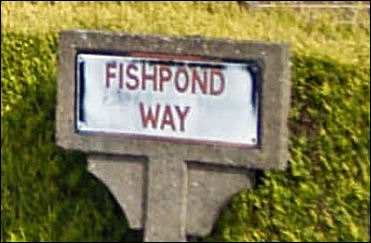
Fishpond Way
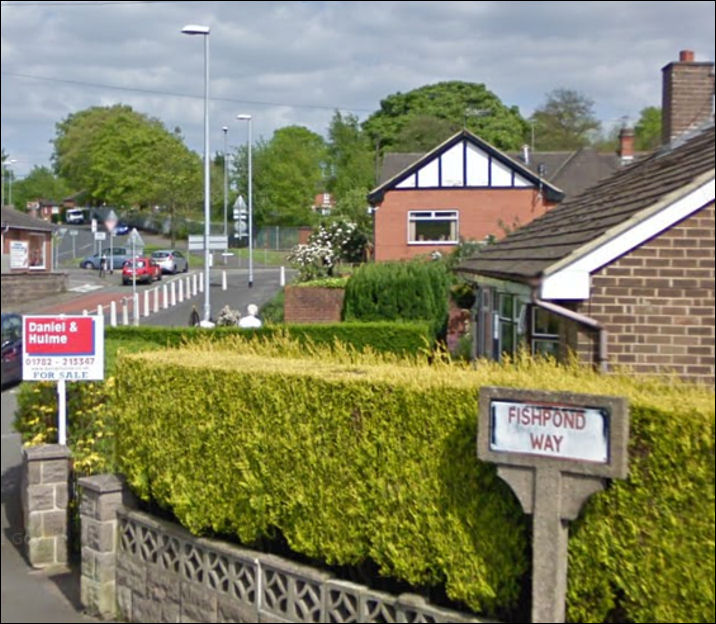
Fishpond Way off Birches Head
Road
the site of Hulton Abbey is behind the trees in the background
|
The endowment of the abbey included a fishery, presumably in the Trent. Traces of the abbey's fishponds near the river on the opposite side of the main road from the abbey site are still visible. Fishpond Way runs by the location of these fishponds. |
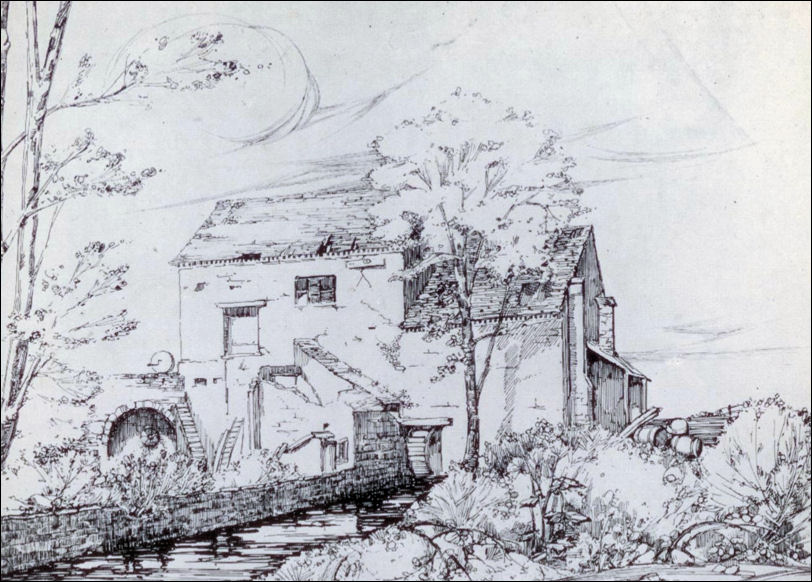
Abbey Hulton mill - from 'Ten
Generations of a Potting Family' -William Adams, an Old English Potter
|
'The tiles and the better specimens of pottery of the fourteenth to the sixteenth centuries were produced mainly by monks, as at Hulton Abbey, near Burslem.' 'After Hulton Abbey surrendered and was dissolved, in 1538, members of the Adams family worked the Potworks there for many years' '...."car" - an iron-bearing clay deposited by spring water from strata rich in clay ironstone. Large deposits of such clay were found near Burslem, and possibly gave rise to the place named Carmountside, the site of Hulton Abbey' Ten Generations of a Potting Family
|
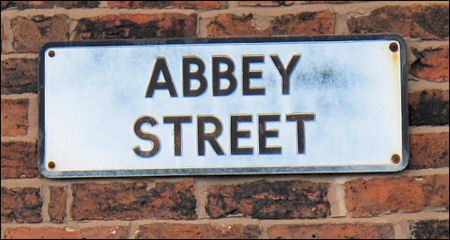
Abbey
Street - a number of streets have names wich reflect the prior existance of
the Abbey

Abbey
Street - at the bottom of this street was a corn mill (shown on the 1890 map)
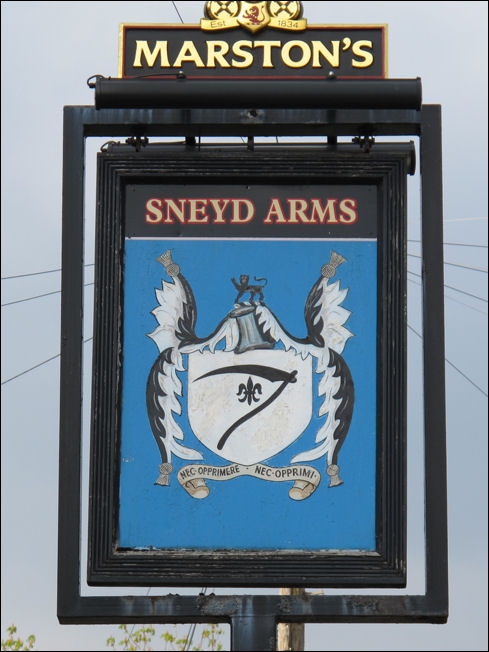
the arms of the Sneyd
Family
|
The scythe is representative of the original woodland nature of the district. The Fleur-de-lys was granted for deeds done in the French wars under the Plantagenet Kings. Amongst others, the Sneyd family owned the large tract of land, in the parish of Burslem which bears the name of Sneyd. Bradwell, in the Manor of Tunstall was formally the chief seat of the Sneyds. Hence the scythe from the Sneyd farms is found in both the Tunstall and Burslem arms. |
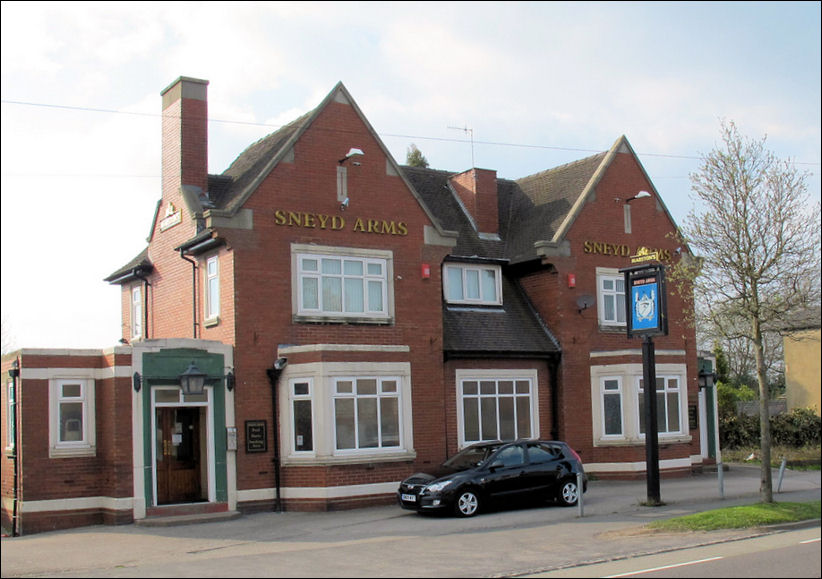
The Sneyd Arms public house
|
The Sneyd family and Abbey Hulton On its suppression in 1538 the abbey and its possessions passed to the king. In 1539 the site, the demesne in Hulton and Stoke, and a coal mine in 'the field of Hulton' were leased to Stephen Bagot of London who had already purchased the abbey's movables at the Dissolution. In 1543 the Crown granted the manor of Hulton, the site of the abbey, its demesne, and all its other possessions in Hulton, Sneyd, Baddeley, Milton, and Burslem to Sir Edward Aston. Sir Edward's great-grandson Sir Walter Aston conveyed the manor to William Sneyd of Keele in 1611. The manor then remained in the Sneyd family. Ralph Sneyd owning some 1,100 of the 1,400 or so acres in Abbey Hulton in 1838. The150-acre Abbey farm, the 26-acre Mill farm, and the 78-acre Birches Head farm formed the only land there still owned by the family in 1951 and were offered for sale on the break-up of the Keele estate in that year. |
![]()
![]()
![]()
next:
Milton
previous: Trent
Vale Stoke
|
related pages Biddulph Branch mineral railway line and Caldon Canal The monks of Hulton Abbey & Sneyd Green Hulton Abbey to Ruston Grange - this article examines Hulton Abbey, the trackway along Sneyd Street and the monks farmland at Ruston Grange. Domesday Book and Stoke-on-Trent
|